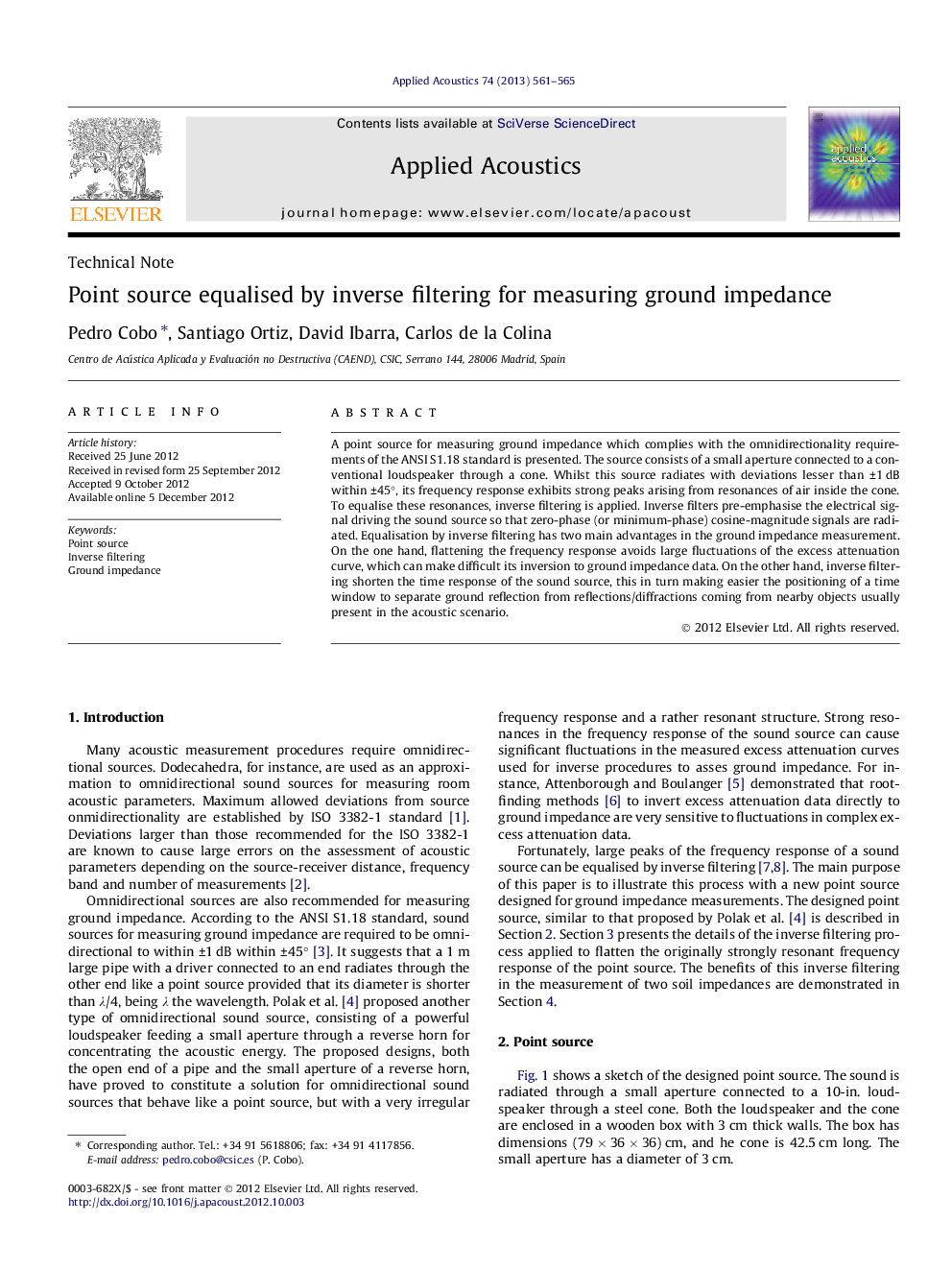| Article ID | Journal | Published Year | Pages | File Type |
|---|---|---|---|---|
| 754688 | Applied Acoustics | 2013 | 5 Pages |
A point source for measuring ground impedance which complies with the omnidirectionality requirements of the ANSI S1.18 standard is presented. The source consists of a small aperture connected to a conventional loudspeaker through a cone. Whilst this source radiates with deviations lesser than ±1 dB within ±45°, its frequency response exhibits strong peaks arising from resonances of air inside the cone. To equalise these resonances, inverse filtering is applied. Inverse filters pre-emphasise the electrical signal driving the sound source so that zero-phase (or minimum-phase) cosine-magnitude signals are radiated. Equalisation by inverse filtering has two main advantages in the ground impedance measurement. On the one hand, flattening the frequency response avoids large fluctuations of the excess attenuation curve, which can make difficult its inversion to ground impedance data. On the other hand, inverse filtering shorten the time response of the sound source, this in turn making easier the positioning of a time window to separate ground reflection from reflections/diffractions coming from nearby objects usually present in the acoustic scenario.
